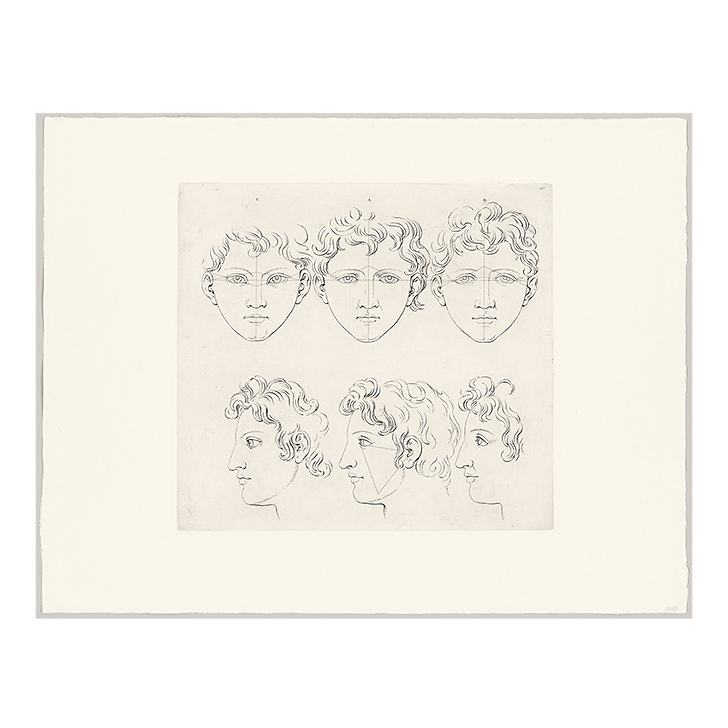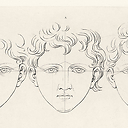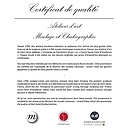Le Brun, Louis XIV's first painter, gave several speeches to the Académie on the expressiveness of human faces. To reinforce the effectiveness of his arguments, he included drawings to illustrate his points. In his lecture on the relationship between human physiognomy and that of animals (the text of...
Read more
Le Brun, Louis XIV's first painter, gave several speeches to the Académie on the expressiveness of human faces. To reinforce the effectiveness of his arguments, he included drawings to illustrate his points. In his lecture on the relationship between human physiognomy and that of animals (the text of which has not survived), he studied the link between character or emotion and facial features. He uses four different approaches. Firstly, he studies the features of famous men from Antiquity, whose personalities and representations are fixed in the collective imagination (Nero is cruel, Seneca is wise, etc.). He then looks at the possible comparisons between human traits and animal figures (each animal can also be associated with a character trait - the fox with cunning, for example). He then turned to the study of eyes and eyebrows - here again, their shape was seen as essential to understanding human expressions and the soul. He concluded with a study of the human brain. These speeches, and the drawings made to accompany them, offer a general reflection on human expressiveness, the way it is portrayed in the arts and the links between physical appearance and the soul.
These drawings enjoyed renewed success in the early 19th century, when prints were made of them and published with an essay analysing Le Brun's approach.
Sheet size: 50 x 65 cm
Sheet size: 35.6 x 38.4
Close






